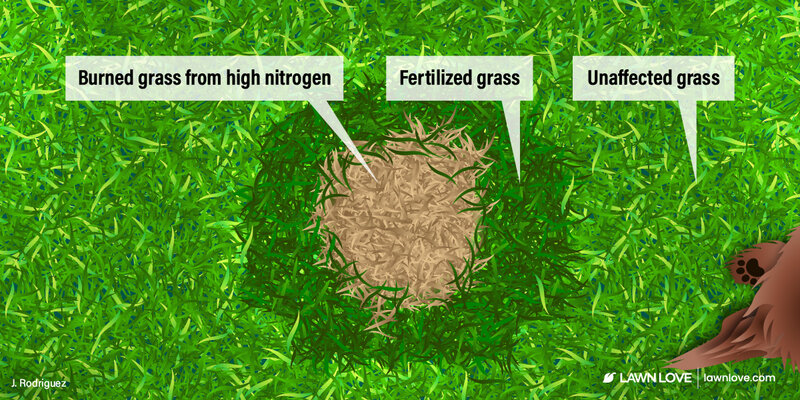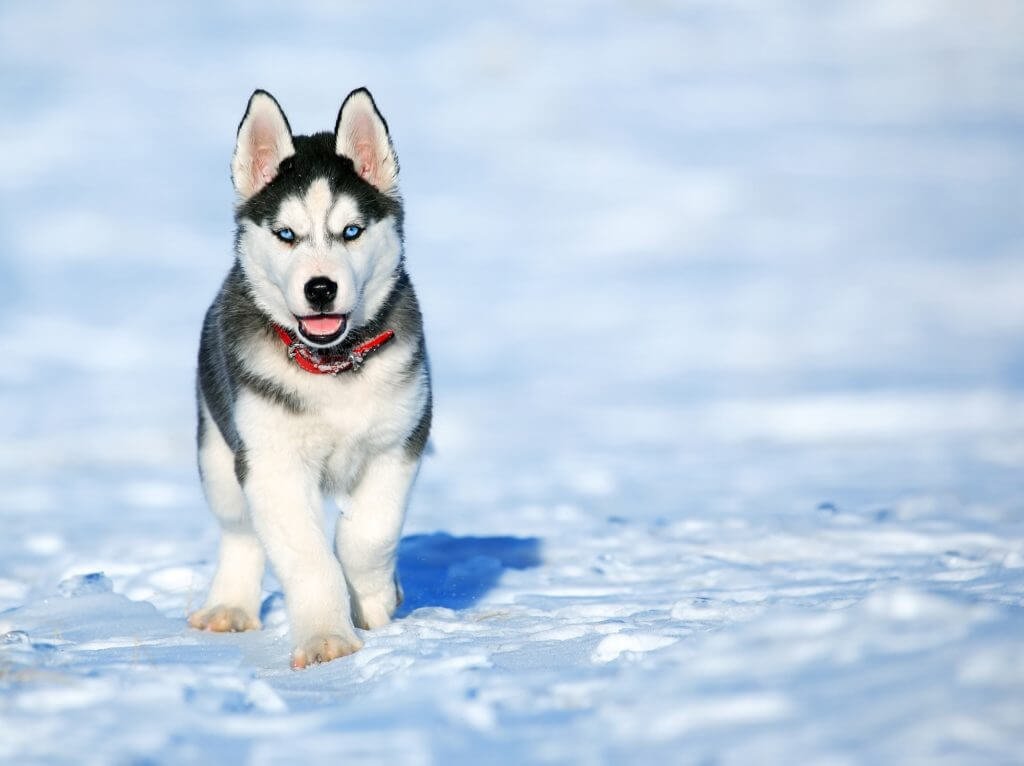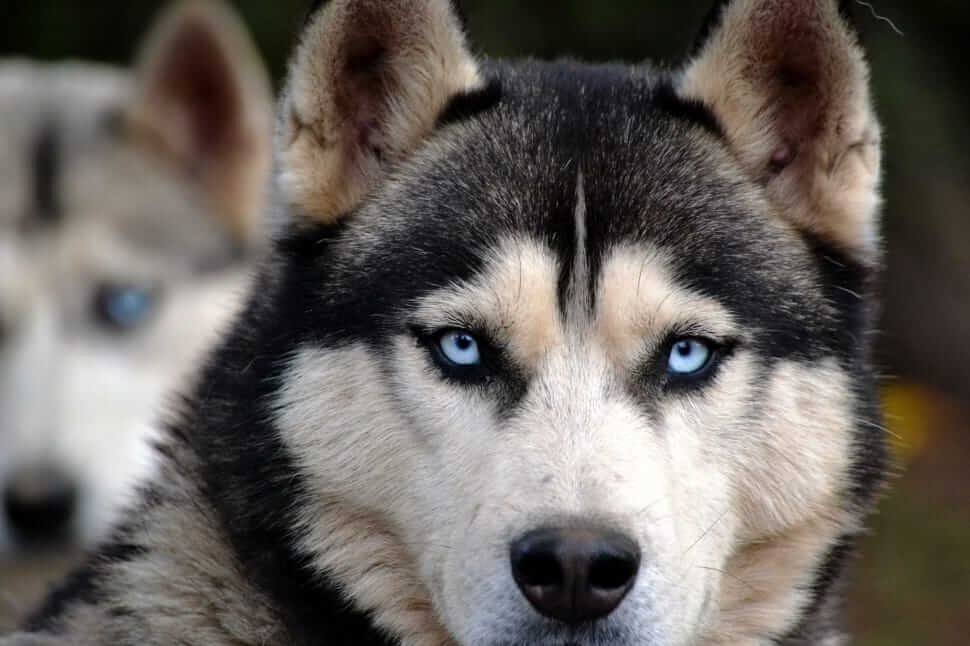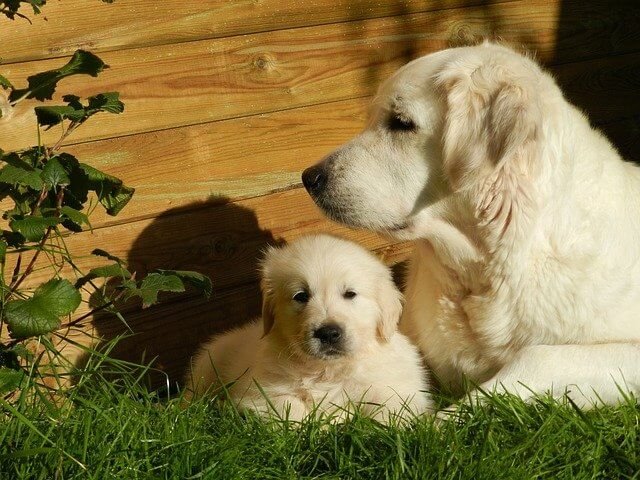Have you observed that a small section of your yard’s grass is consistently dead and yellow? Does your dog have a prefered area to urinate? You’ve identified the offender. Everyone loves their dogs, but nobody likes dead grass spots in their yard. Does dog pee kill the grass? The easy solution is nitrates. Does there exist a way to stop it and fix it? To find out the answer, continue reading.

Table of Contents
Does Dog Pee Kill The Grass?
Some nutrients are taken into your dog’s bloodstream through food and supplements, while the kidneys filter out others. Then, through urine, the body expels the unabsorbed nutrients.
The chemical components in the pee—rather than the actual pee—cause problems for your lawn. They leave behind a large amount of nitrogen as the water in their pee evaporates. Without treatment, the grass will develop those unsightly yellow streaks and become brown in the middle and green at the edges, where the nitrogen is less concentrated.
Even though nitrogen and nitrates are suitable for grass and are even used as fertiliser, too much of either can be dangerous. For example, your dog may overdo it and damage the grass if you already fertilise your grass with nitrogen, and then it concentrates in one region of the lawn.
Do Female Dogs Cause More Damage?
It would appear that female dogs are more responsible for grass burning. However, rather than being caused by the substances in dogs’ urine, this apparent sex difference is primarily due to how dogs urinate.
In addition to dispersing their smell rather than leaving one concentrated area, some male dogs lift their legs and urinate on standing objects like tree trunks and garden fences. Female dogs, on the other hand, tend to crouch and pee directly onto the grass more frequently. Your dog frequently peeing in the same spot can harm your vegetation. Either dog that squats to urinate will worsen lawn damage, including young adult males, pups, and senior dogs of any gender. Gender is not a factor.
How to identify dog urine damage in grass
Depending on how well-kept your lawn is, damage from dog poop can take one of two forms:
- Brown stains on your grass indicate an excess of nitrogen.
- Dark green patches on your grass indicate a lack of nitrogen.
Check your lawn for any brown or dark green patches. Here’s how to determine whether dog urine is to blame.
- The perimeter of the dead patch should be surrounded by a ring of dark green grass that is darker than the rest of your lawn.
- When you pull on grass, it doesn’t come up readily.
The grass occasionally turns dark green rather than brown. These indicate that the dog’s urine supplied nutrients to your soil previously deficient in nitrogen.
Can Changing Your Dog’s Diet Help?
Nitrogen in a dog’s urine might vary depending on nutrition. For example, processed proteins produce more urea and nitrogen than their fresh counterparts. Therefore, a dog eating processed proteins has a higher risk of harming the lawn. Make your dog food at home for a diet that is genuinely fresh for your pet. Avoid changing your dog’s diet or adding supplements without visiting a veterinarian.
Your dog’s urine nitrogen content is influenced by how much water they consume. They will urinate with less nitrogen since they are drinking more water. Adding more water bowls throughout the home or purchasing a dog drinking fountain will encourage your dog to drink more water.
How to fix dog urine spots
Don’t be upset with your dog; lawn damage isn’t the same as a torn-up sofa. But how to stop dog urine from killing grass naturally?
Follow these instructions to restore your grass to its former glory following dog urine damage:
- Deeply water the yard.
- Reseed the areas of grass that have died. (perhaps using grass seed that is more urine-resistant, like fescue or Bermudagrass)
- Apply grass treatments designed to remove nitrogen and salts from dog urine from the soil.
How to prevent dog urine damage in your lawn
You can prevent those green or brown patches from reappearing once you’ve repaired your lawn. Alternatively, if your dog hasn’t already harmed the lawn, you can stop it before it starts. All you have to do is plan and act before any harm is done.
Set aside a place to pee. Teach your dog to urinate in a specific location. By doing this, the damage is contained to a small region rather than your entire lawn. You can also use a pee pad. Reusable puppy pads by DryPaws are an excellent option. They are washable, sturdy, and non-toxic to your dog.
Make a space without any plants. Another choice is to forgo your plants and cover the lawn in bark or stones. Any material you choose should have a comfortable feel for your dog to walk on and not hurt their paws.
Select tough plants. Consider sowing low-maintenance grasses like ryegrass, fescue, and sedges on your lawn. These can either be sewn in with the current grass or used to replace your property. These artificial grass substitutes are strong, poop-resistant, and water-efficient. Ensure that none of your chosen plant species is hazardous before planting them.
Keep your grass healthy. Switch to a dog-friendly fertiliser with less nitrogen and reseed the dead sections. Then, regularly water your lawn, ensuring the water soaks thoroughly into the ground. Alternatively, you can let the grass a little longer so it won’t be as tender.
If you’re set on a lush, green lawn, those unattractive brown and yellow patches may make you reconsider letting your dog relieve itself in the backyard. Instead, you can construct an outdoor refuge that pleases your dog and your green thumb with a bit of perseverance and creativity.
Final Thought
Dogs like playing and running in the grass more than anyone else, but the grass may not share their affection. In rare circumstances, dog poop kills grass, producing unsightly brown spots.
However, there are numerous steps you may take to stop and eliminate brown spots without endangering your dog’s wellbeing. Reusable puppy pads by Dry Paws Australia is one of the best options to save the grass. The occasional splotches of brown grass are a modest price to pay for the tail wags you get when you say “outside.”







